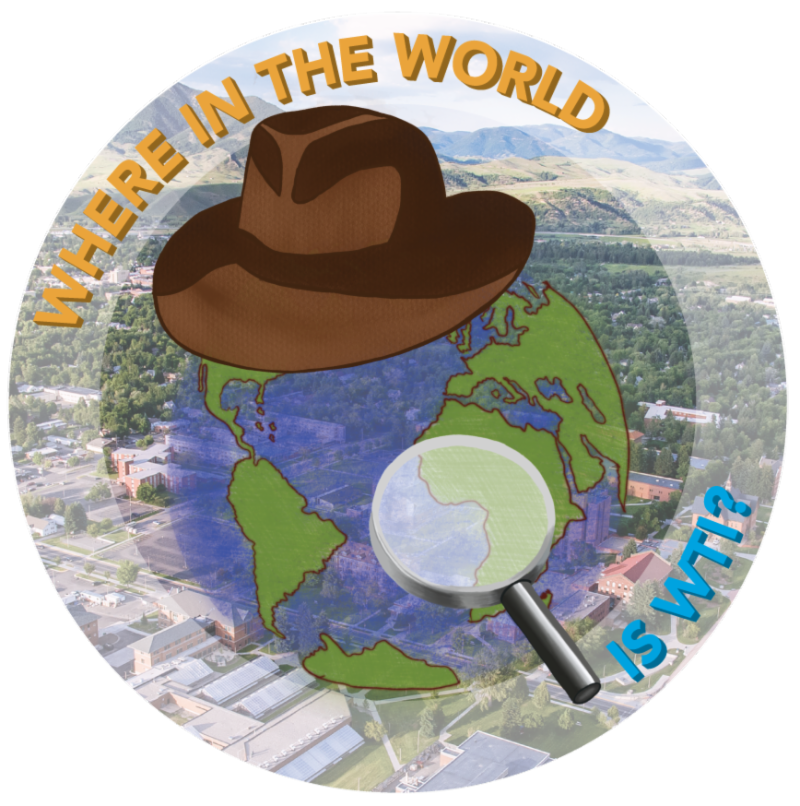Watch Our Road Ecologists in Action!

Conservation groups – including the National Wildlife Federation, Save L.A. Cougars, and ARC (Animal Road Crossings) – marked Wildlife Crossings Week (May 4 – 8) by hosting a series of webinars on current efforts around the world to enhance habitat connectivity. Road Ecology Program Manager Rob Ament led a session on “Improving Ecological Connectivity: the […]
Optimizing Opportunities, a workshop on networking, pitching, impressions and follow-up.
Presentation by Les Craig from the MSU Innovation Campus. View Presentation
Winter Maintenance Peer Exchange 2013
2013_Alaska_Dunning 2013_Aurora_Albrecht 2013_Clear-Roads-RNS-Progress_Wieder 2013_Colorado_Anderle 2013_Connected-Vehicle_Chapman 2013_Connecticut_Rizzo_Moran 2013_Evaluation-Form-Summary 2013_Evaluation-Form-Summary 2013_FHWA-MAP21-Guevera 2013_FHWA-Road-Weather-Management-Program_Guevera 2013_Idaho_Spoor 2013_Illinois-Peters 2013_Iowa 2013_Kentucky_Burks-Vint 2013_Michigan 2013_Minnesota_Page 2013_Nebraska_Mattison 2013_Update_June_2014 2013_Virginia_Vlacich 2013-Agenda 2013-Opening_Smithson
Winter Maintenance Peer Exchange 2011
2011_Peer_Exchange_Attendee_List_11_1 2011_Peer_Exchange_Attendee_List_5_31 2011_Peer_Exchange_Equipment_and_Methods_Survey 2011_Peer_Exchange_RWIS_Survey 2011_Peer_Exchange_SICOP_Management_and_Training_Survey_Final 2011_Update_June_2012 Final_Agenda_2011_Peer_Exchange
Traffic Safety Culture Summit 2011
Our intention for this Summit was to move beyond informative presentations and towards action on this important work. The role of culture in improving the effectiveness of traffic safety systems is critical. This page is an archive providing access to presentations and other documents created for and by this event. Please feel free to contact […]
Traffic Safety Culture Summit 2010
Our intention for this Summit was to move beyond informative presentations and towards action on this important work. The role of culture in improving the effectiveness of traffic safety systems is critical. This page is an archive providing access to presentations and other documents created for and by this event. Please feel free to contact […]
Winter Maintenance Peer Exchange 2009
01-1_SA_Welcome 01-3_PK_Kissinger_Intro 01-4_NW_Ward_Intro 02-1_DG_Girasek 02-2_MR_Rakauskas 02-3_PK_Kissinger 03-1_JL_Linkenbach 03-2_LR_Richardson 03-3_MC_Cantor 04-1_GW_Wilde 04-2_AG_Greenberg 04-3_BA_Arseneau 05-1_Twisk_Wegman 05-2_BB_Bair TSC09_Proceedings
Traffic Safety Culture Summit 2009
Our intention for this Summit was to move beyond informative presentations and towards action on this important work. The role of culture in improving the effectiveness of traffic safety systems is critical. This page is an archive providing access to presentations and other documents created for and by this event. Please feel free to contact […]
Road Dust Management Practices and Future Needs Conference 2008
Conference Article – Road Dust Conference – Summary Morning Sessions A_dust_backgrd_paper Wright_presentation Vitton_presentation Vitton_abstract Skorseth_presentation Skorseth_C2presentation Sanders_presentation Sanders_paper Rushing_presentation Rushing_paper RoadDustConf_Proceedings Road_Dust_Management_Practices_ver2_Long Road_Dust_Management_Practices_ver2_(2)_Long_no_watermark Poulin_poster Poulin_abstract Main_presentation Main_paper Long_presentation Long_paper Langston_presentation Junge_presentation Jones_presentation Jones_C2presentation Johnson_poster Johnson_abstract James_presentation Huntington_poster Huntington_abstract Hall_presentation Hall_paper Fitz_presentation Fitz_paper Finger_presentation Etyemezian_poster Etyemezian_abstract Dust_Conference_Proceedings_05-04-09 Dust_Conference_Proceedings_05-04-09_combined Cowherd_presentation Cowherd_paper Bytnar_presentation Bytnar_outline Bytnar_C2presentation Bolander_presentation Beaulieu_poster Beaulieu_abstract […]
Winter Maintenance Peer Exchange 2007
Agenda – Attendee_map – attendee_survey_results – attendee_titles_chart – attendees_list 2007_Peer_Exchange_Progress_Update_01-03-11 2007_Peer_Exchange_Progress Update_04-04-11 2007_Update_June_2012 27_consolidated_needs Consortiums DOT_survey_questions DOT_survey_responses Draft_Final_Problems_January_2009_Progress Draft_Final_Problems_January 2009_Progress_Kate Draft_Final_Problems_June 2008_Progress_Kate Minutes_December_5_2007 National_Winter_Maintenance_Final_Report Peer_Exchange_2007_Progress_Update_08-05-11 Research_needs Clarification_research_needs
